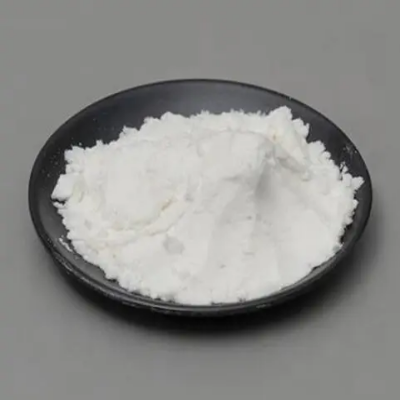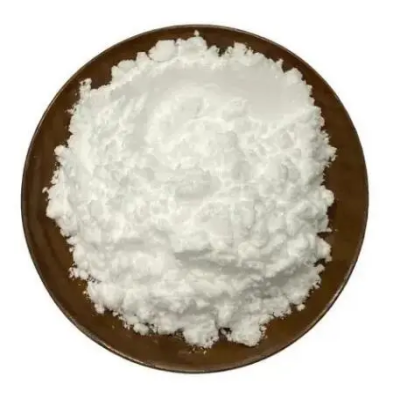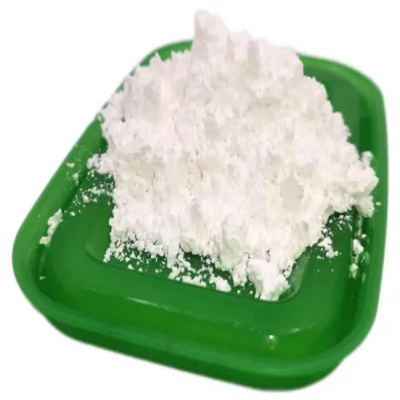-

2-Chloro-5-Chloromethylthiazol CAS:105827-91-6
2-Chloro-5-Chloromethylthiazol is a chemical compound with the molecular formula C5H3Cl2NS. Belonging to the thiazole class, it is characterized by its chlorinated structure and methylthiazol moiety. This compound is known for its distinct chemical properties and plays a significant role in various chemical processes.
-

3-Cyanopyridine CAS:100-54-9
3-Cyanopyridine, with the chemical formula C6H4N2, is a crystalline compound recognized for its distinctive properties. This organic compound is utilized in various industrial applications due to its unique chemical structure and reactivity.
-

2-Bromo-5-nitrothiazole CAS:3034-48-8
2-Bromo-5-Nitrothiazole, with the molecular formula C4H2BrN3O2S, is a chemical compound classified within the thiazole family. Recognizable by its brominated and nitro-substituted structure, this compound possesses distinctive chemical characteristics. Widely employed in various applications, it plays a significant role in diverse chemical processes.
-

Boc-Tyr-OH CAS:3978-80-1
Boc-Tyr-OH, also known as N-tert-butoxycarbonyl-L-tyrosine, is a fundamental compound widely utilized in peptide synthesis and pharmaceutical research. This crystalline substance, with a molecular formula of C14H17NO5, serves as a crucial building block for creating customized peptides and peptidomimetics. With high purity and precise chemical properties, it plays an essential role in the production of complex peptide structures for various biomedical applications.
-

Boc-Trp-OMe CAS:33900-28-6
Boc-Trp-OMe, also known as N-tert-butoxycarbonyl-L-tryptophan methyl ester, is a vital compound widely used in peptide synthesis and pharmaceutical research. This crystalline substance, with a molecular formula of C18H21N3O4, serves as a fundamental building block for the creation of custom peptides and peptidomimetics. With high purity and precise chemical properties, it plays an essential role in the production of complex peptide structures for various biomedical applications.
-

Boc-Ser-OH CAS:3262-72-4
Boc-Ser-OH, also known as N-tert-butoxycarbonyl-L-serine, is a critical compound widely used in peptide synthesis and pharmaceutical research. This crystalline substance, with a molecular formula of C11H19NO5, serves as a fundamental building block for the creation of custom peptides and peptidomimetics. With high purity and precise chemical properties, it plays an essential role in the production of complex peptide structures for various biomedical applications.
-

Boc-Tyr(Bzl)-OH CAS:2130-96-3
Boc-Tyr(Bzl)-OH, also known as N-tert-butoxycarbonyl-L-tyrosine benzyl ester, is a vital compound extensively used in peptide synthesis and pharmaceutical research. This crystalline substance, with a molecular formula of C24H21NO5, serves as a crucial building block for creating customized peptides and peptidomimetics. With high purity and precise chemical properties, it plays an essential role in the production of complex peptide structures for various biomedical applications.
-

Fmoc-β-Ala-OH CAS:35737-10-1
Fmoc-β-Ala-OH, or Fmoc-beta-alanine, is a derivative of beta-alanine commonly used in peptide synthesis. It features an Fmoc (9-fluorenylmethoxycarbonyl) protecting group attached to the beta-alanine molecule, aiding in peptide chain elongation. This compound is pivotal in solid-phase peptide synthesis (SPPS) due to its ability to selectively protect the amine group while allowing for subsequent chemical reactions. Fmoc-β-Ala-OH is notable for its stability during peptide assembly and its compatibility with a variety of coupling reagents and resin types, making it a cornerstone in the field of peptide chemistry.
-

Fmoc-Arg(NO2)-OH CAS:58111-94-7
Fmoc-Arg(NO2)-OH, or Fmoc-nitroarginine, is a specialized derivative of arginine utilized in peptide synthesis. This compound features a 9-fluorenylmethoxycarbonyl (Fmoc) protecting group attached to a nitro-substituted arginine molecule. The nitro group introduces unique chemical reactivity, expanding the application of this derivative in peptide chemistry. Fmoc-Arg(NO2)-OH is instrumental in the controlled modification of peptides, enabling the incorporation of nitro functionality into peptide sequences for diverse research and synthesis purposes.
-

Fmoc-Arg-OH CAS:91000-69-0
Fmoc-Arg-OH, or Fmoc-arginine, is a crucial component in peptide synthesis, featuring a 9-fluorenylmethoxycarbonyl (Fmoc) protecting group attached to the arginine molecule. This derivative is widely employed in solid-phase peptide synthesis (SPPS) and solution-phase peptide synthesis due to its ability to selectively protect the arginine’s amino group, facilitating controlled peptide chain elongation. Fmoc-Arg-OH is recognized for its compatibility with various coupling reagents and solid supports, making it an essential tool for researchers in the field of peptide chemistry.
-

Boc-Trp-OH CAS:13139-14-5
Boc-Trp-OH, also known as N-tert-butoxycarbonyl-L-tryptophan, is a vital compound widely used in peptide synthesis and pharmaceutical research. This crystalline substance, with a molecular formula of C17H20N2O4, serves as a fundamental building block for the creation of custom peptides and peptidomimetics. With high purity and precise chemical properties, it plays an essential role in the production of complex peptide structures for various biomedical applications.
-

Boc-Trp-OSu CAS:3392-11-8
Boc-Trp-OSu, or N-tert-butoxycarbonyl-L-tryptophan N-hydroxysuccinimide ester, is a valuable compound widely used in peptide synthesis and bioconjugation chemistry. This reagent consists of Boc-protected tryptophan coupled to an N-hydroxysuccinimide (NHS) ester group, making it a versatile tool for the selective modification of amino groups in peptides and proteins. Boc-Trp-OSu is utilized in various bioconjugation strategies, enabling the site-specific attachment of peptides to targeting molecules, surfaces, or other biomolecules for biomedical research and therapeutic applications.

